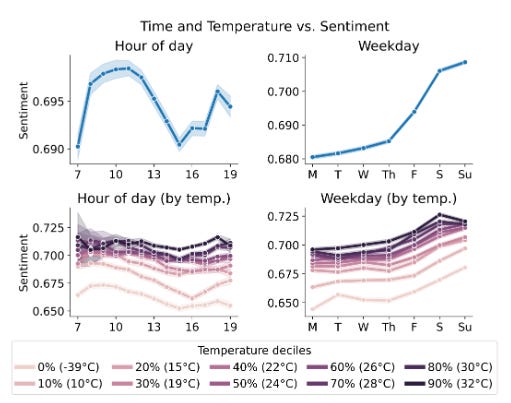WWAT welcomes back Katie Pflaumer, who authored this issue.
It’s some people’s job to take a plane directly into a hurricane and find out what’s going on in there. It’s other people’s job to calculate just how nauseous of an experience that is. Josh Wadler won the dubious honor of being both of those folks.
When the NOAA WP-3D Orion Hurricane Hunter aircraft called “Kermit” (before you ask, the other planes are “Miss Piggy” and “Gonzo”) flew into the eyewall of Hurricane Ian the morning of September 28, 2022, the crew expected to experience a few ups and downs. They’d strapped down all the equipment they could and were prepared to launch an Altius-600 drone into a hurricane for the first time, while outside the windows, Ian intensified to its peak Category 5 strength.
The plane hit the eyewall–and a pocket of the most intense, and strange, turbulence many on the crew had ever experienced. Along with the usual violent bouncing-in-your-seat, the plane was flung forwards and backwards and side-to-side.
A viral video taken by NOAA Programs and Integration Engineer Nick Underwood shows the crew weathering sickening motions that tossed the off-duty pilot’s bed off its bunk and threw dropsondes all over the cabin. Because they were professionals, this definitely didn’t cause them to curse, yell, and fear for their lives. (Click the thumbnail to view the video.)
Just kidding.
Well, not as much as I would have.
This would have been me.
While you don’t see too much of it in the video, the flight might officially be the bumpiest in Hurricane Hunter history. Wadler recently announced at the 36th Conference on Hurricanes and Tropical Meteorology that he and his colleagues had developed a new metric for turbulence just to see if they had bragging rights on this one. The short answer: Yes.
Wadler and colleagues’ new measurement is called “bumpiness”:
Even the equation looks bumpy.
Unlike other ways to describe turbulence, bumpiness (B) accounts not just for up-and-down motion but for the full three dimensions of getting beaten up by a hurricane. It also measures the jerks and accelerations as experienced by each individual person on the flight. When the plane pitched upward (with the nose moving up and the tail moving down) or “yawed” counterclockwise, people in different parts of the plane experienced things differently based on the plane’s center of gravity. “Bumpiness” takes that into account.
The research team combined flight-level data from all WP-3D flights since 2004 (when high-enough-quality data became available) to calculate the forces acting on each seat in the plane in all three dimensions–namely, acceleration and jerk (change in acceleration over time).
Then they ranked the B values for all seats on every flight.
The back-and-forth and side-to-side motions experienced during the worst part of the Hurricane Ian flight were notably more intense than any other, although a flight into Hurricane Lane won for strictly up-and-down turbulence. Hurricane Ian won for bumpiness when they took all three dimensions into account. The pilots got the worst of it, with the first pilot’s seat, at the front left of the plane, getting a three-dimensional bumpiness rating of 6.04 meters per second squared – 34% higher than any other flight.
Ironically, Wadler’s specific seat (near the center of the plane) experienced the least of the turbulence, which is a bit of a letdown when you’ve created a whole new scientific metric to show people how terrible your plane flight was. On the other hand, being in even the safest seat on this plane was more than scary enough.
You can read more about the Hurricane Hunter flight and the bumpiness index in a deeper dive on the American Meteorological Society’s Front Page blog.
And Now for Something Completely Different
Researchers at the University of Southern California studied the impact weather has on the tone of social media posts. They analyzed over 8 million posts from Twitter and Snapchat.

They found that weather does impact general sentiment shared via Snapchat and Twitter. That impact lasts for days and has regional variations.
The authors assert that researchers of social media may need to control for weather when they are analyzing changes and trends in social media tone. If someone is grumpy, it may not only be politics or the ending of Game of Thrones. It could also be the rainstorm outside. Maybe save posting about that terrible restaurant experience until a sunny day.
We acknowledge Dr. Josh Wadler for additional contributions.











